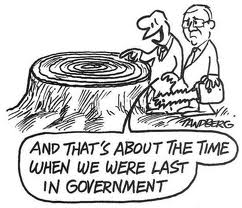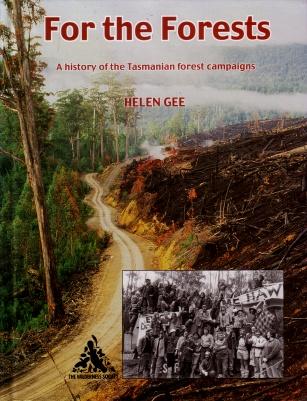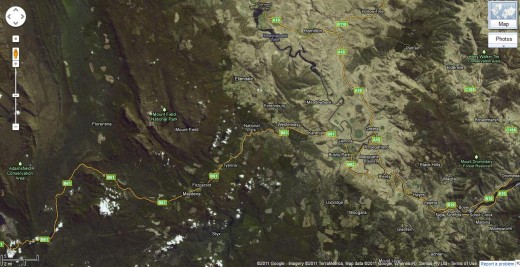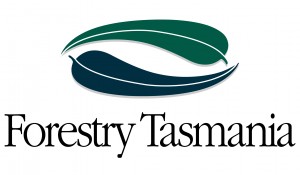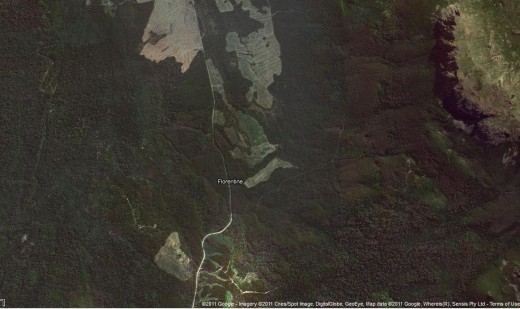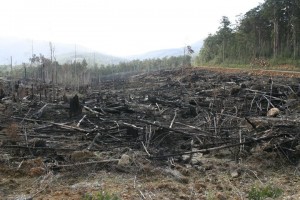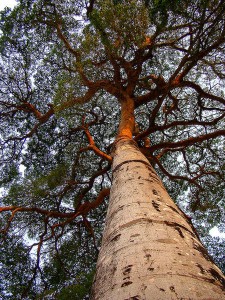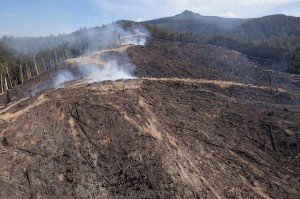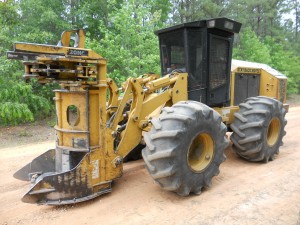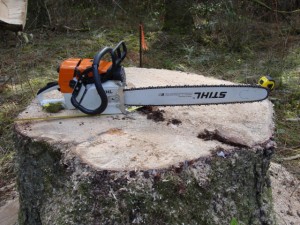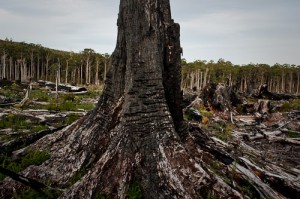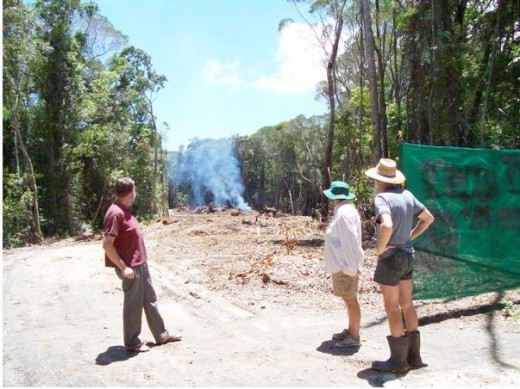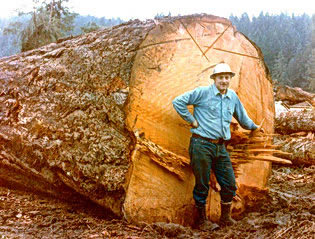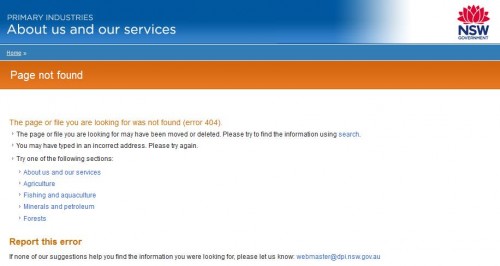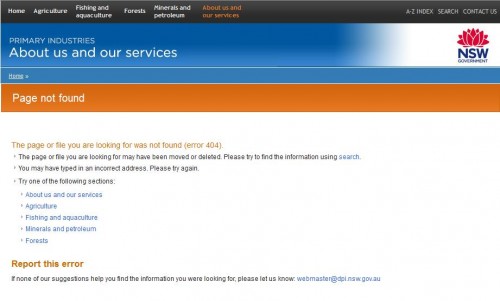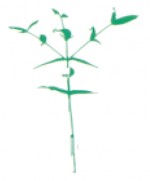In Tasmania, pristine remains defenceless
Monday, September 23rd, 2013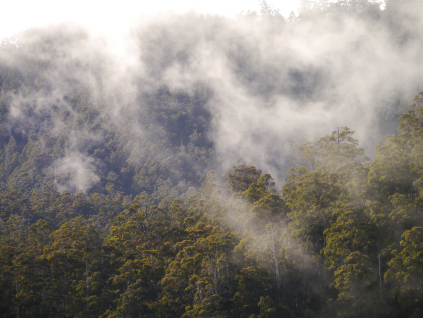 In Tasmania, pristine remains defenceless
In Tasmania, pristine remains defenceless.
Hope from 2013:
.
“Today I think of the Wedge-tailed Eagle that I watched fly above my tree, whose habitat was once under threat and is now protected and of the Tasmanian Devils who lived in the forest 60 metres below my platform who can now raise their young in peace.”
.
~ Miranda Gibson, The Observer Tree, Tasmania, ‘National student movement stands up for Tasmania’s native forests’, 20130710, ^http://observertree.org/2013/07/10/media-release-national-student-movement-stands-up-for-tasmanias-native-forests/].
Recalling the STIHL nightmare from 1982:
.
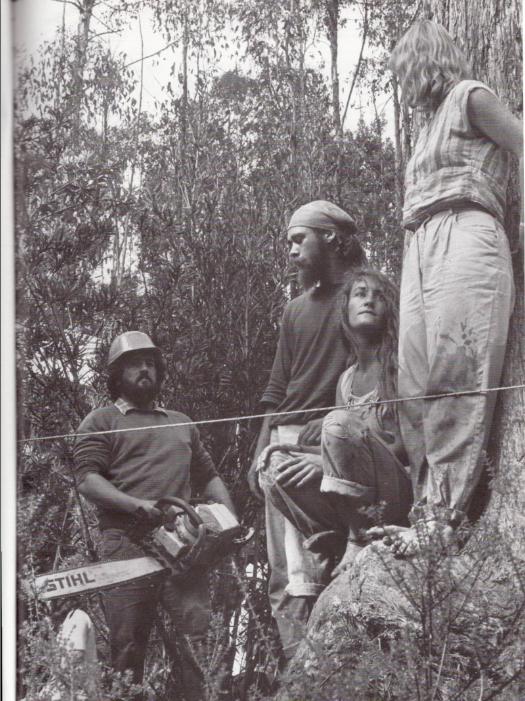 Tasmania’s Farmhouse Creek Conservation Blockade of 1982: the people’s forest stance against industrial ecocide. Moral courage in the face of adversity – it resonates with the robust spirit of our brave young people. Lest we forget our young folk’s personal exposure to Corporate Logger Bully Violence, personal sacrifice and its haunting trauma.
Tasmania’s Farmhouse Creek Conservation Blockade of 1982: the people’s forest stance against industrial ecocide. Moral courage in the face of adversity – it resonates with the robust spirit of our brave young people. Lest we forget our young folk’s personal exposure to Corporate Logger Bully Violence, personal sacrifice and its haunting trauma.[Source: ‘For the Forests – A history of the Tasmanian Forests Campaigns’, 2001, book by Helen Gee and Janet Fenton, The Wilderness Society, Hobart, Tasmania]
.
From 2001:
.
<< In a world in which the tropical forests are disappearing and oldgrowth forests are threatened everywhere, global biodiversity is declining at an alarming rate. Australia can no longer afford to destroy oldgrowth forests. They are a priceless resource. Few of our tall forests of any type remain in pristine condition,and particularly where they have not been degraded they should be protected. The practice of destroying oldgrowth forests in order to replace it with plantations is criminal vandalism. Plantations should only be established on already degraded land.
Tasmania has the tallest forests in the Southern Hemisphere, some of the greatest areas of pristine temporate Gondwanan rainforest found anywhere on Earth, and some of the world’s oldest trees. This makes it a Mecca for tourists as forests disappear elsewhere. Because Tasmania is the State with the most forest – 40% of area forested – and because the quite erroneous view prevails that forests regenerate completely after clearfelling, a shameful attitude to forest conservation exists at the highest level in bureaucracies.
The Island is being torn apart by the woodchip-at-any-cost mentality. The forests are being sold off at a loss. The royalties paid by private companies fall far short of covering the cost of forest management, regrowth and infrastructure. Job losses attributable to woodchipping were estimated at 4,000 by 1995 – refuting the contention that the industry is good for employment. The Government, for sake of keeping a few foresters in work for a few years does not have the fortitude to stop the destruction. >>
<< Gondwanan forest, in its complex rainforest and wet scherophyll expression, does not regenerate to form its original mixture. The complex web of life that it comprises, the extraordinary antiquity and grandeur of its thousands-of-years-old giant components, and the untold interactions betwen its macroscopic and microscopic plant and animal species and soil biota, make it a living entity – ‘a surviving dinosaur deserving of complete protection’.
Over 70% of forests logged are clearfelled in Tasmania, destroying habitats and most of the wildlife they support. Replacement plantations and regenerated areas cannot provide the range of habitats or the biota. Over 90% of the timber extracted from natural forests is woodchipped and only five percent ends up as sawn timber. (An estimated five million cuibic metres of woodchips a year are sold, mainly to Japan). The common practice of burning ‘waste’ in felled coupes, a scorched earth policy, results in total slaughter of small animals and organisms, many of which are little known or understood. >>
 Dark Forces Regrouping
Will Hodgman’s 20th Century ignorant wrath
..against everything naturally Tasmanian
Dark Forces Regrouping
Will Hodgman’s 20th Century ignorant wrath
..against everything naturally Tasmanian
.
<< Even at the start of a new millenium, logging operations are penetrating into more of the untouched valleys. Forests of World Heritage value are being destroyed and the integrity of the World Heritage protected areas themselves is being compromised. The damaging effect of logging operations, and particularly the clearfelling, on streams and on the hydrology of catchments, and on soils, is never taken into account and is a serious consequence. The brave people who have spoken out, risked their lives and faced arrest at peaceful direct actions around the Island, need your support. Every Australian who appreciates the heritage values of our forests and wants future generations to experience them, can learn what is at stake here and support the campaigns that are ongoing. >>
~ Mary E White DSc
[Source: Forward by Mary E White in book by Helen Gee (b.1950) and Janet Fenton: ‘For the Forests – A history of the Tasmanian Forests Campaigns’, 2001, published by The Wilderness Society, Hobart, Tasmania].
.
Further Reading:
.
[1] Helen Gee’s 2001 book ‘For the Forests: A History of the Tasmanian Forest Campaigns‘, (with Janet Fenton) published by The Wilderness Society, Inc. [^Read More]
.
‘Oral history of the Tasmanian forest campaigns. Compilation of over 100 interviews of artists and activists, politicians and environmentalists such as Senator Bob Brown and Alec Marr, Campaign Director of the Wilderness Society. Chronicles strategies, protest marches, and achievements of campaigns. Foreword by palaeobotanist Mary E White. Copiously illustrated, includes appendices, maps, chronology, bibliography and index. Author is a Tasmanian writer and environmentalist, writer of ‘The South West Book: A Tasmanian Wilderness’.’
.
[2] Extracts of an interview Dr Mary White in 2003 by Amy Heague (Focus Magazine), ^http://focusmag.com.au/mgl/interviews/dr-mary-white-paleobotanist
.
<< When Dr Mary White moved to the Manning Valley (New South Wales mid-north coast) back in 2003, the area acquired a true visionary and pioneer in the world of Paleobotany and environmental conservation.
Dr White has an amazing career that spans over five decades and two southern continents, is an accomplished and award winning palaeobotanist, lecturer and over the last 20 years author of several award winning books on the evolution of the Australian continent and its ecosystems. She is a passionate conservationist, was named a Member (AM) in the General Division of the Order of Australia for service to botany as a researcher through promotion of increased understanding and awareness of the natural world and just a few weeks ago was awarded the Lifetime Conservation Award from Australian Geographic.>>
.
Interviewer: You came to Australia in 1955. Tell us about your first encounter with Australian plant life.
Dr White: We docked at Fremantle and had three days to wait until we came to Sydney, so we hired a car and went to look at the sand plains and wildflowers. I was amazed at how the composition of the flora was just slightly different from what I had been finding in South Africa.
I had this questioning feeling; how had I travelled thousands of miles across the ocean to get here and yet I could recognise at a family level everything growing around me. It was the same kind of ecosystem I had just come from. So, I suddenly was confronted with the concept of Gondwana and believed it totally.
.
Interviewer: What prompted you to purchase Falls Retreat at Johns River at the base of Middle Brother in 2003?
Dr White: I wanted somewhere I could covenant the land to maintain biodiversity and develop as an environmental education centre. It is in a wonderful part of the world and well worth protecting. Since we’ve done all the plant, animal, bird, bat and frog lists and what not, we have realised that the biodiversity here is much, much richer than we ever thought it was going to be. We have even found a couple of rare and endangered frogs.
I am now very much into climate change and have a very important message to send, which is hopefully what I have been concentrating on doing and intend to do for the rest of my life. I decided a long time ago I was going to die at a 107, so I have a few good years left in me yet – so be warned! >>
.
 Dr Mary White – Paleobotanist, curator, author
(b.1926 in then Southern Rhodesia)
Dr Mary White – Paleobotanist, curator, author
(b.1926 in then Southern Rhodesia)
.
<<..original ecosystems must be preserved because they are complete and have all the interconnections. “Ultimately you need to understand that this is a living planet and it behaves like a huge super organism, and that everything is interconnected and interrelated.”>>
[Source: ‘Dr Mary White Moves On’, 20130806, ABC NSW Mid North Coast, by Carla Mascarenhas, ^http://www.abc.net.au/local/stories/2013/08/06/3819380.htm]